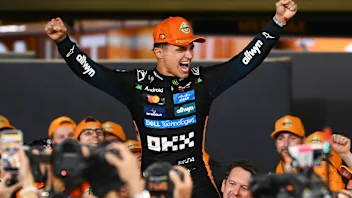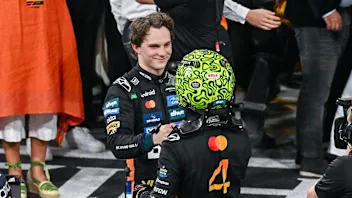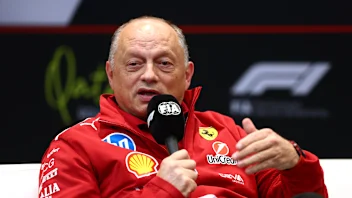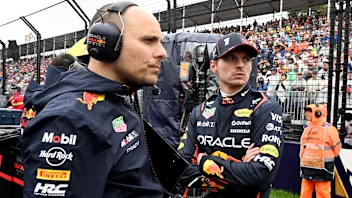Technical analysis - brake-by-wire systems explained
Formula One cars have used electronic ‘fly-by-wire’ throttle technology for years, but this season the sport has also adopted electronically-controlled rear brake systems for the first time. But just what is brake-by-wire and how does it work? We guide you through the technology…
For the past 20 years, since the ban on anti-lock braking systems (ABS) in the early Nineties, Formula One brake systems have taken a relatively simple, albeit hugely efficient, form. They consist, as the regulations dictate, of a twin-circuit hydraulic system with two separate master cylinders for the front (1) and rear (4) wheels so that, even in the event of one complete circuit failure, braking should still be available through the second circuit. The amount of braking power going to the front and rear circuits can be 'biased' by a control in the cockpit, allowing a driver to stabilise his car under braking.
The introduction of KERS (which converted waste energy generated under braking into electrical power) in 2009 made things slightly more complex for the drivers because the system connected to the transmission, and the resulting reverse torque acting on the rear axle changed the brake balance at the rear of the car. However, because the maximum amount of power that could be harvested was limited to 80bhp, this wasn’t too major an issue for the drivers to deal with.
Now though, with 2014’s much more powerful Energy Recovery Systems (ERS) enabling around 160bhp to be harvested, there is a lot more reverse torque acting on the rear axle and as a result the teams are now allowed to implement electronically-controlled brake-by-wire rear brake systems so that the drivers are able to maintain a reasonable level of balance and stability under braking.
Of course, whilst brake-by-wire systems are relatively simple in theory, they’re much more complex in reality. In essence, what the systems are designed to do is make sure that the driver receives his desired level of rear brake pressure, regardless of the amount of ERS harvesting going on.
Here’s how it works: During every braking event the Energy Control Unit (2) takes into account both how hard the driver presses the brake pedal and the level of energy harvest required from the MGU-K (3) to charge the car’s energy store/battery (this can be changed by the driver via steering wheel settings).
Then, using the same hydraulic system that also operates the gear change, power steering, clutch, differential, throttle and even the DRS rear wing system, the Energy Control Unit reduces the amount of pressure being sent to the rear brakes (based on both the brake bias requested by the driver and the amount of retardation created by the level of MGU-K energy harvest).
The teams have been refining their systems throughout the early part of the season, helping to give the drivers more consistency under braking. Several squads, including Red Bull, Mercedes, Sauber and McLaren, have even been able to run smaller rear discs and four-piston rear calliper's instead of the standard six-piston version, such is the reduced retardation power required from the rear brakes. In a sport where every gram of weight makes a difference, this is quite an advantage.
Next Up
Related Articles
 All the key stats from Norris’ title-winning season
All the key stats from Norris’ title-winning season Piastri 'will be a world champion' in future – Norris
Piastri 'will be a world champion' in future – Norris Abu Dhabi 'not a bad weekend' for Ferrari – Vasseur
Abu Dhabi 'not a bad weekend' for Ferrari – Vasseur Wolff calls Abu Dhabi ‘mediocre’ but ‘pleased’ to finish P2
Wolff calls Abu Dhabi ‘mediocre’ but ‘pleased’ to finish P2.webp) VOTE: Choose your favourite race of the 2025 season
VOTE: Choose your favourite race of the 2025 season Verstappen pays tribute to Lambiase after ‘emotional year’
Verstappen pays tribute to Lambiase after ‘emotional year’